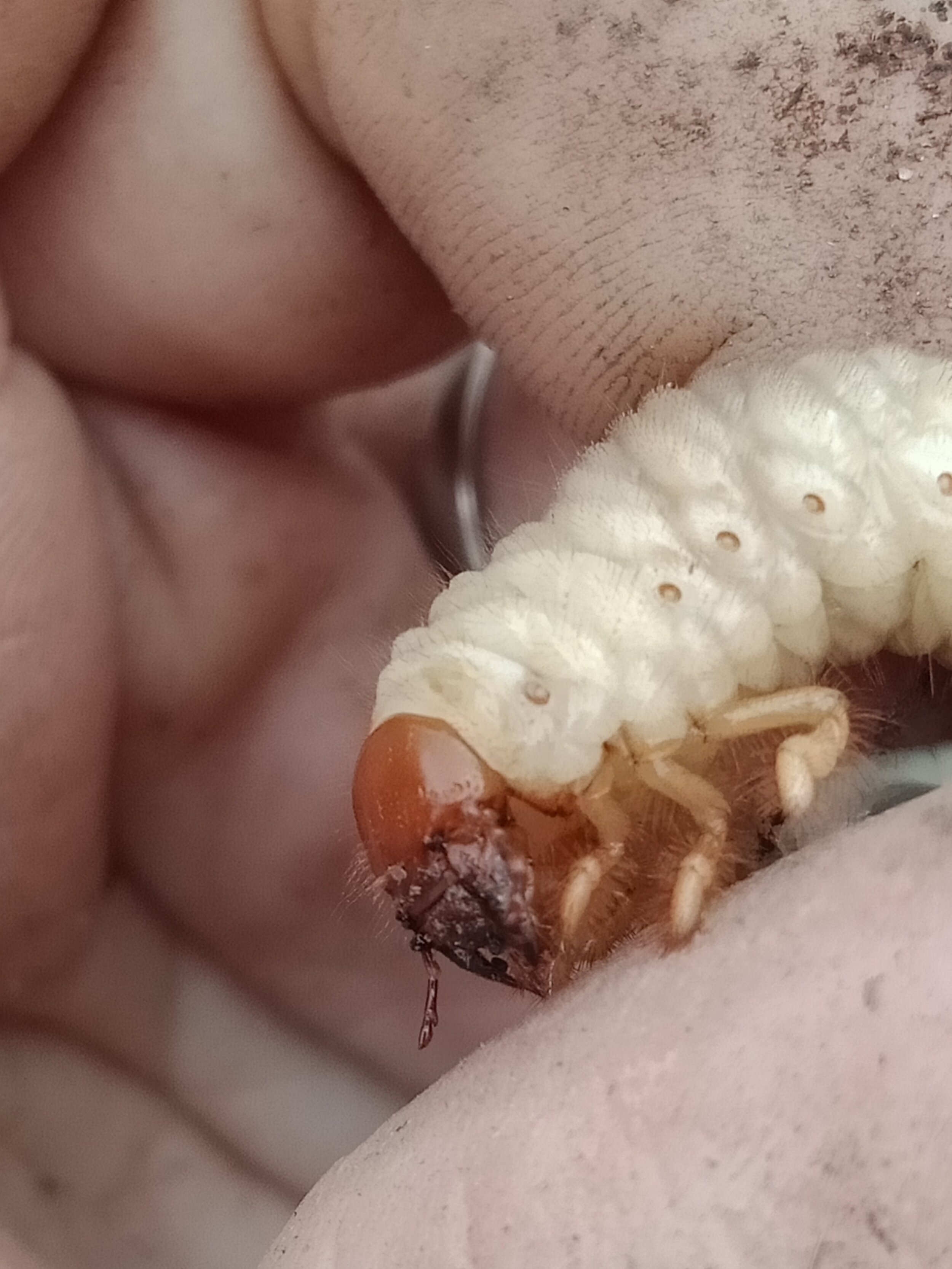Curl Grubs
I’ve no doubt most gardeners have encountered these guys buried in their garden before. Most garden groups will suggest you throw them to the chickens as they eat roots and can kill your crops, but honestly I have a different tactic.
Description
These grubs generally are from the Scarabaeidae family which consists of some 30,000 species of beetles worldwide (probably even more that haven’t been described in scientific publishing). They are sometimes erroneously called witjuti grubs however witjuti grubs are wood eating larvae and thus are found in trees, not the soil. Typically curl grubs are creamy white, approximately up to 5cms long and shaped like a ‘C’ with legs close to their head. It is nearly impossible for an untrained eye to identify the species of beetle from its larvae, and herein lies the problem with eliminating them. A quick google search of ‘lawn grub’ will bring up a myriad of turf and lawn companies telling you all about the cockchaffer and African black beetles, but they neglect to tell you about the other beetles these can become… Such as these guys…






Life Cycle
The beetles typically become more active as the weather heats up, the adult female beetles prefer to lay eggs around mulched areas or areas with fallen bark. The grubs spend most of the year underground eating detritus (roots, rotting leaves or wood, dung etc) before turning into pupae and finally emerging as a beetle to restart the cycle. Adult beetles generally feed on leaves and flowers, Christmas beetles specifically can be quite harmful to young eucalyptus trees which they favour and can defoliate significantly.
Pest control
The reason these grubs typically have a bad name is because they can eat roots of desired plants, particularly lawns where the damage is extremely obvious in patches where the sluggish larvae are. I have also experienced them in large numbers in a small pot plant which explained why my plant was struggling. Typically they only cause issues if their numbers are large and contained to a small area (Ie a pot plant or small green space) or sometimes if it is a more invasive species.
As mentioned previously, with it being nearly impossible to identify in the grub stage, my strong suggestion is to move them on to your compost pile where they can happily forage for as much rotting material as they could want. There are pest control sprays aimed specifically for lawn grubs however I’d remind you to consider whether you have noticed a decline in Christmas beetle number over previous years and think about why that may be. It would be more ideal to learn about introduced black beetles and remove those at the beetle stage, as they are discovered. They are a good source of protein for chickens so by all means feel free to feed the odd one to your chickens, but I wouldn’t suggest them to all head that way.
After An Attack
If you’ve moved the grub on to a compost pile or a location you don’t mind a few dead/weak plants then there isn’t really much else to do. Plants will generally recover once the beetles move on (or are relocated). As always a bit of support for a plant in the form of a fertiliser or weed tea can be beneficial. Then the only step left to take is to pat yourself on the back for being more aware of nature and coexisting within the ecosystem rather than trying to dominate it. May you be rewarded with more Christmas Beetles
Further reading



